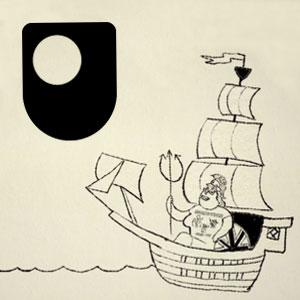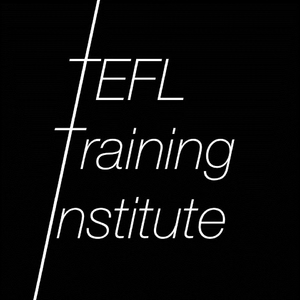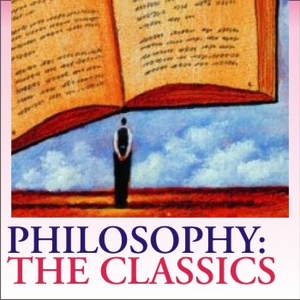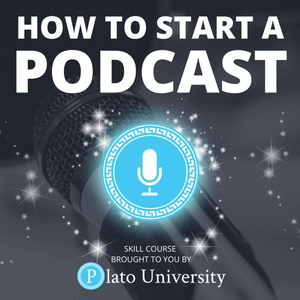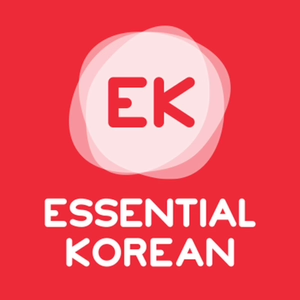
20. How To Use Korean Particle 은/는 as Topic & Contrastive Particle in Sentences (Yes, we're now learning Korean particles!)
11/27/20 • 24 min
Welcome to the Essential Korean Podcast, where I help break down the nuances of the Korean language to help you become a more aware and confident speaker of Korean. Ready to elevate your Korean skills and join a vibrant community of learners? Join the EK Community at my.essentialkorean.com for engaging courses, comprehensive resources, exclusive content, and great conversations on diverse Korea-related topics with other members. Visit our membership page to choose a plan that gives you access to episode transcripts and an enhanced learning experience with weekly classes and study sessions alongside like-minded people. Let’s embark on this wonderful journey together!
-----
Welcome to Episode 20 of the Essential Korean Podcast! In this milestone episode, we dive into the Korean particle system, an essential component of Korean grammar. Particles are the backbone of Korean sentences, and mastering them is key to understanding and communicating effectively in Korean.
🎯 What you’ll learn in this episode:
The two main types of Korean particles:
1️⃣ Function Markers: Particles like 이/가, 을/를, 은/는 that define the role of a word (subject, object, or topic) in a sentence.
2️⃣ Meaning Adders: Particles like 에, 에서, 부터, 까지 that convey meanings such as "in," "on," "at," "from," or "to."
A deep dive into 은/는 particles, with clear examples to help you understand how they function in sentences.
✨ Why this episode is a milestone:
Learning Korean particles is a significant step forward in your language-learning journey. By focusing on 은/는 in this episode, you’ll develop a strong foundation for mastering the rest of the particle system in the future.
🎵 Featured Song:
Title: 우리는 ("We")
Artist: 송창식 (Song Chang-sik)
Listen here! https://youtu.be/YzcLM1f3_qU
👂 Practice Makes Perfect!
Repeat after Teacher Kay as she walks you through sentences and examples. Hearing yourself use these particles will help reinforce your learning and build confidence.
💬 Share in the comments: What’s your biggest takeaway from this lesson on 은/는?
#LearnKorean #KoreanParticles #EssentialKorean #SpeakKorean #KoreanGrammar #은는Particles #KoreanLanguage #KoreanLessons #KoreanForBeginners #KoreanPractice #LanguageMilestone #KoreanLearningJourney
- Home page: www.essentialkorean.com
- Community: my.essentialkorean.com
- https://www.instagram.com/essential.korean
Welcome to the Essential Korean Podcast, where I help break down the nuances of the Korean language to help you become a more aware and confident speaker of Korean. Ready to elevate your Korean skills and join a vibrant community of learners? Join the EK Community at my.essentialkorean.com for engaging courses, comprehensive resources, exclusive content, and great conversations on diverse Korea-related topics with other members. Visit our membership page to choose a plan that gives you access to episode transcripts and an enhanced learning experience with weekly classes and study sessions alongside like-minded people. Let’s embark on this wonderful journey together!
-----
Welcome to Episode 20 of the Essential Korean Podcast! In this milestone episode, we dive into the Korean particle system, an essential component of Korean grammar. Particles are the backbone of Korean sentences, and mastering them is key to understanding and communicating effectively in Korean.
🎯 What you’ll learn in this episode:
The two main types of Korean particles:
1️⃣ Function Markers: Particles like 이/가, 을/를, 은/는 that define the role of a word (subject, object, or topic) in a sentence.
2️⃣ Meaning Adders: Particles like 에, 에서, 부터, 까지 that convey meanings such as "in," "on," "at," "from," or "to."
A deep dive into 은/는 particles, with clear examples to help you understand how they function in sentences.
✨ Why this episode is a milestone:
Learning Korean particles is a significant step forward in your language-learning journey. By focusing on 은/는 in this episode, you’ll develop a strong foundation for mastering the rest of the particle system in the future.
🎵 Featured Song:
Title: 우리는 ("We")
Artist: 송창식 (Song Chang-sik)
Listen here! https://youtu.be/YzcLM1f3_qU
👂 Practice Makes Perfect!
Repeat after Teacher Kay as she walks you through sentences and examples. Hearing yourself use these particles will help reinforce your learning and build confidence.
💬 Share in the comments: What’s your biggest takeaway from this lesson on 은/는?
#LearnKorean #KoreanParticles #EssentialKorean #SpeakKorean #KoreanGrammar #은는Particles #KoreanLanguage #KoreanLessons #KoreanForBeginners #KoreanPractice #LanguageMilestone #KoreanLearningJourney
- Home page: www.essentialkorean.com
- Community: my.essentialkorean.com
- https://www.instagram.com/essential.korean
Previous Episode

19. How To Express What Someone Doesn't Do in Korean (Verb Negation)
Welcome to the Essential Korean Podcast, where I help break down the nuances of the Korean language to help you become a more aware and confident speaker of Korean. Ready to elevate your Korean skills and join a vibrant community of learners? Join the EK Community at my.essentialkorean.com for engaging courses, comprehensive resources, exclusive content, and great conversations on diverse Korea-related topics with other members. Visit our membership page to choose a plan that gives you access to episode transcripts and an enhanced learning experience with weekly classes and study sessions alongside like-minded people. Let’s embark on this wonderful journey together!
-----
In this episode, you’ll learn how to negate verb forms in Korean, or in simpler terms, how to say what someone doesn’t do. By building on what we’ve already learned about expressing actions (e.g., "I eat" or "I cook"), we’ll now explore how to express statements like “I don’t eat” or “I don’t cook.”
🎯 What you’ll learn in this episode:
How to negate verb forms in Korean for more detailed and realistic conversations
How to answer questions about what actions you do or don’t do
A review of the verbs from previous episodes, plus 6 new, essential Korean verbs:
· 가요: to go
· 배워요: to learn
· 가르쳐요: to teach
· 읽어요: to read
· 만나요: to meet
· 좋아해요: to like
✨ Practice Makes Perfect!
We’ll practice these verbs in a variety of real-life situations. Don’t forget to repeat after Teacher Kay to improve your pronunciation and confidence. By the end of this episode, you’ll be amazed at how far you’ve come in your Korean journey!
💬 Which verb are you most excited to practice in sentences? Let us know in the comments!
Don't forget to repeat after Teacher Kay and hear yourself saying the sentences and understanding the conversations. You'll be surprised at how far you've come!
#LearnKorean #KoreanGrammar #NegationInKorean #EssentialKorean #SpeakKorean #KoreanVerbs #KoreanForBeginners #KoreanLessons #KoreanPractice #KoreanLanguage #DailyKorean #KoreanSpeakingSkills
- Home page: www.essentialkorean.com
- Community: my.essentialkorean.com
- https://www.instagram.com/essential.korean
Next Episode

21. Learn to Build Longer Sentences in Korean: Learn 하고, 그리고, and 은/는!
Welcome to the Essential Korean Podcast, where I help break down the nuances of the Korean language to help you become a more aware and confident speaker of Korean. Ready to elevate your Korean skills and join a vibrant community of learners? Join the EK Community at my.essentialkorean.com for engaging courses, comprehensive resources, exclusive content, and great conversations on diverse Korea-related topics with other members. Visit our membership page to choose a plan that gives you access to episode transcripts and an enhanced learning experience with weekly classes and study sessions alongside like-minded people. Let’s embark on this wonderful journey together!
-----
Welcome to Episode 21 of the Essential Korean Podcast! In this episode, we take another exciting step forward in your Korean learning journey by exploring how to connect nouns and sentences and further deepen your understanding of the 은/는 particle introduced in Episode 20.
🎯 What you’ll learn in this episode:
1️⃣ How to connect nouns using 하고 (and).
2️⃣ How to connect sentences using 그리고 (and).
3️⃣ How to use the 은/는 particle within connected sentences for clarity and emphasis.
✨ Why this episode matters:
By the end of this lesson, you’ll be able to build longer sentences in Korean—a big step forward from simpler phrases. More importantly, you’ll gain clearer insights into how the 은/는 particle functions in communication, helping you better organize your thoughts and express them effectively in Korean.
👂 Practice Makes Perfect!
Don’t forget to repeat after Teacher Kay and actively engage with the material by thinking about the meaning of each sentence as you practice.
💬 Let us know in the comments how you’re starting to connect nouns and sentences in Korean!
#LearnKorean #KoreanConnectors #EssentialKorean #SpeakKorean #KoreanGrammar #은는Particle #KoreanForBeginners #KoreanLessons #KoreanPractice #DailyKorean #KoreanSentenceBuilding #LanguageLearning
Happy learning, everyone!
- Home page: www.essentialkorean.com
- Community: my.essentialkorean.com
- https://www.instagram.com/essential.korean
If you like this episode you’ll love
Episode Comments
Generate a badge
Get a badge for your website that links back to this episode
<a href="https://goodpods.com/podcasts/essential-korean-podcast-183486/20-how-to-use-korean-particle-%ec%9d%80%eb%8a%94-as-topic-and-contrastive-particle-in-16440969"> <img src="https://storage.googleapis.com/goodpods-images-bucket/badges/generic-badge-1.svg" alt="listen to 20. how to use korean particle 은/는 as topic & contrastive particle in sentences (yes, we're now learning korean particles!) on goodpods" style="width: 225px" /> </a>
Copy
